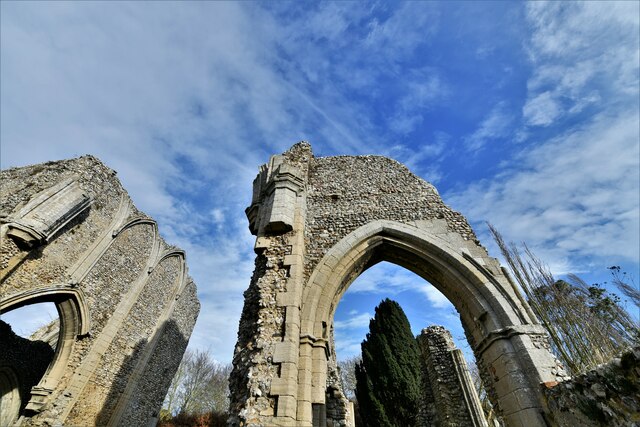Gravelpit Hill
Hill, Mountain in Norfolk King's Lynn and West Norfolk
England
Gravelpit Hill

Gravelpit Hill is a prominent natural feature located in Norfolk, England. Situated in the eastern part of the country, it is part of the broader Norfolk Uplands region. Despite its name, Gravelpit Hill is not a hill in the traditional sense, but rather a relatively small elevated area that reaches a maximum height of around 50 meters (164 feet) above sea level. It is often referred to as a hill due to its distinctive topography and the relative flatness of the surrounding landscape.
The hill is primarily composed of sand and gravel deposits, which have accumulated over thousands of years through a combination of geological processes, including erosion and glacial activity. The loose nature of the soil makes it ideal for agricultural purposes, and the surrounding areas are known for their fertile farmland.
Gravelpit Hill offers breathtaking panoramic views of the surrounding countryside, with rolling green fields extending as far as the eye can see. It is a popular destination for locals and tourists alike, who visit to enjoy the scenic beauty and engage in recreational activities such as hiking, picnicking, and photography.
The hill is also home to a diverse range of flora and fauna, including several species of birds, small mammals, and wildflowers. It serves as an important habitat for local wildlife and contributes to the overall ecological balance of the region.
Overall, Gravelpit Hill is an attractive natural landmark that showcases the beauty of Norfolk's landscape and provides a unique vantage point to appreciate the surrounding countryside.
If you have any feedback on the listing, please let us know in the comments section below.
Gravelpit Hill Images
Images are sourced within 2km of 52.934183/0.74886346 or Grid Reference TF8440. Thanks to Geograph Open Source API. All images are credited.



Gravelpit Hill is located at Grid Ref: TF8440 (Lat: 52.934183, Lng: 0.74886346)
Administrative County: Norfolk
District: King's Lynn and West Norfolk
Police Authority: Norfolk
What 3 Words
///strongly.operated.backhand. Near Wells-next-the-Sea, Norfolk
Nearby Locations
Related Wikis
Burnham Thorpe
Burnham Thorpe is a hamlet and civil parish on the River Burn and near the coast of Norfolk, England. It is famous for being the birthplace of Vice Admiral...
Burnham Market railway station
Burnham Market was a railway station which served the village of Burnham Market in Norfolk, England. Opened by the West Norfolk Junction railway in 1866...
Creake Abbey
Creake Abbey is a ruined abbey in Norfolk, England, situated alongside the River Burn and a mile to the north of the village of North Creake. The abbey...
Burnham Market
Burnham Market is an English village and civil parish near the north coast of Norfolk. It is one of the Burnhams, a group of three adjacent villages that...
Have you been to Gravelpit Hill?
Leave your review of Gravelpit Hill below (or comments, questions and feedback).

















